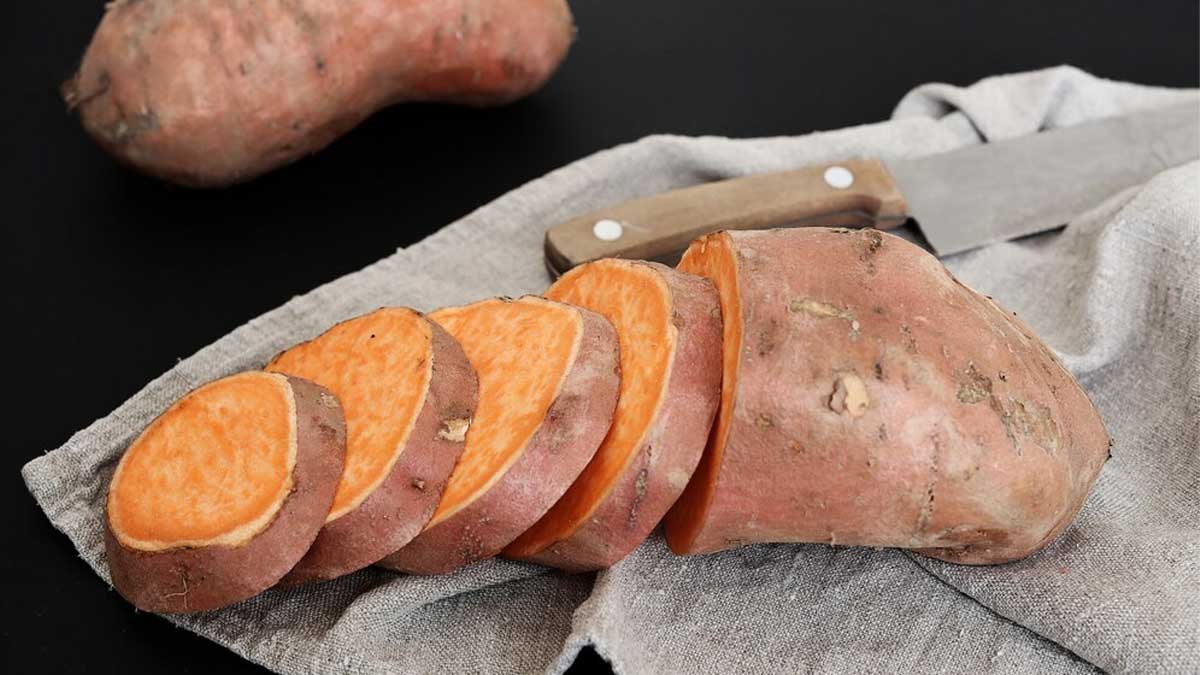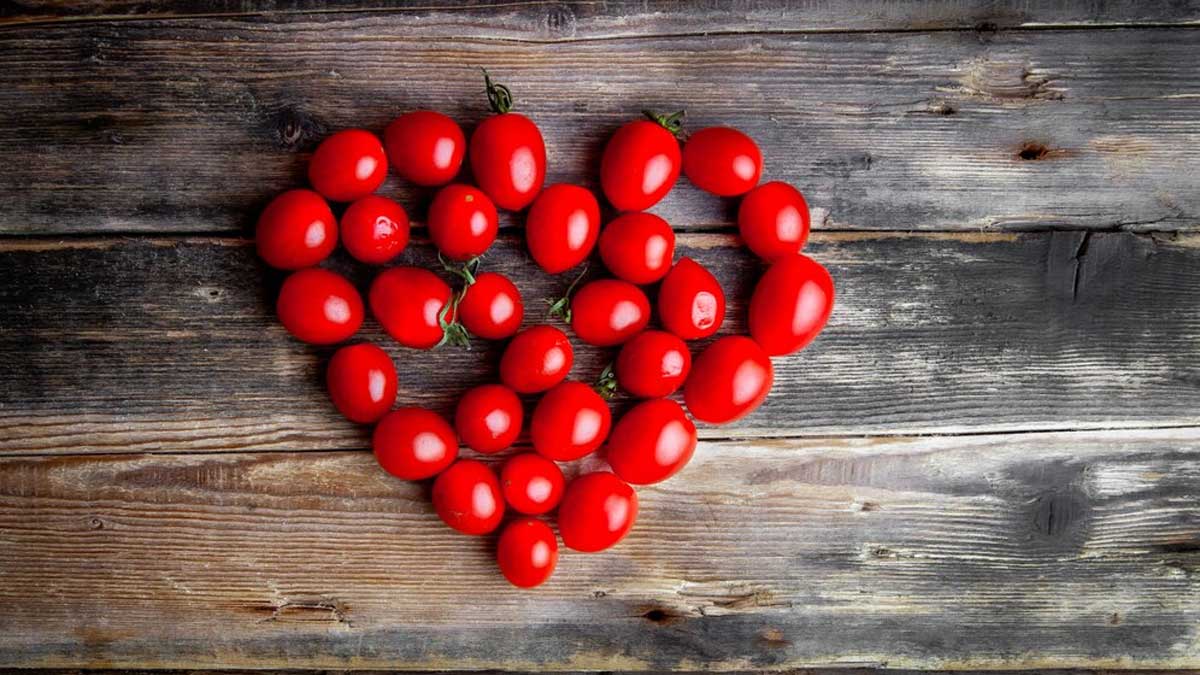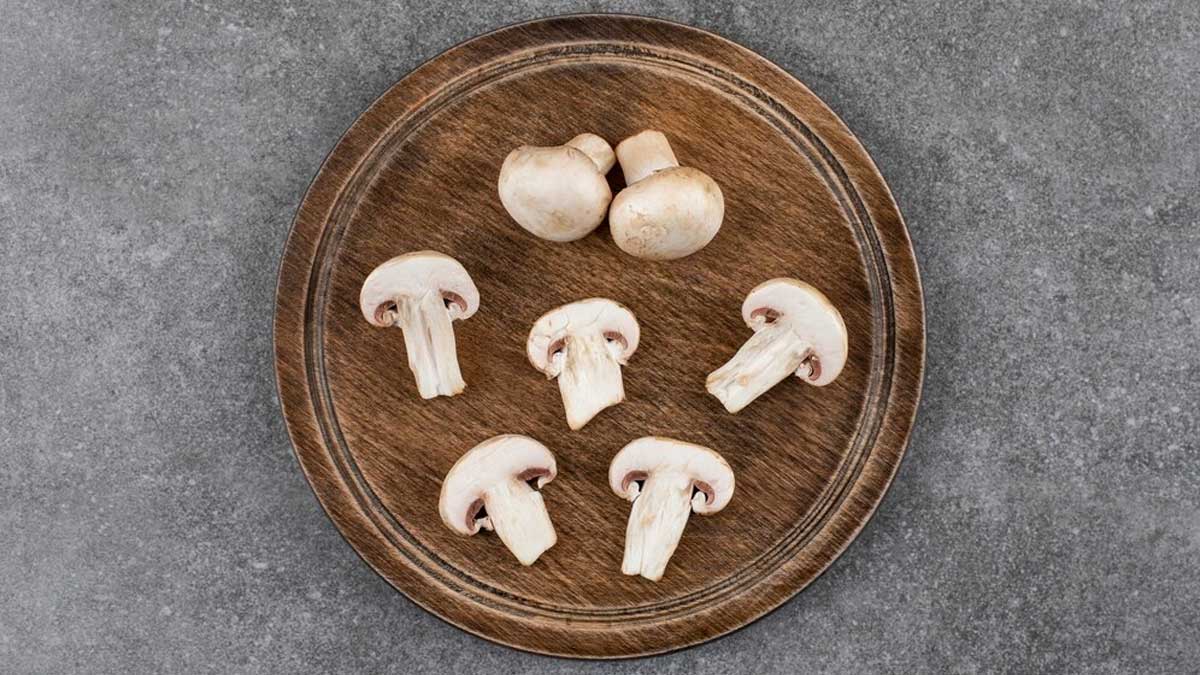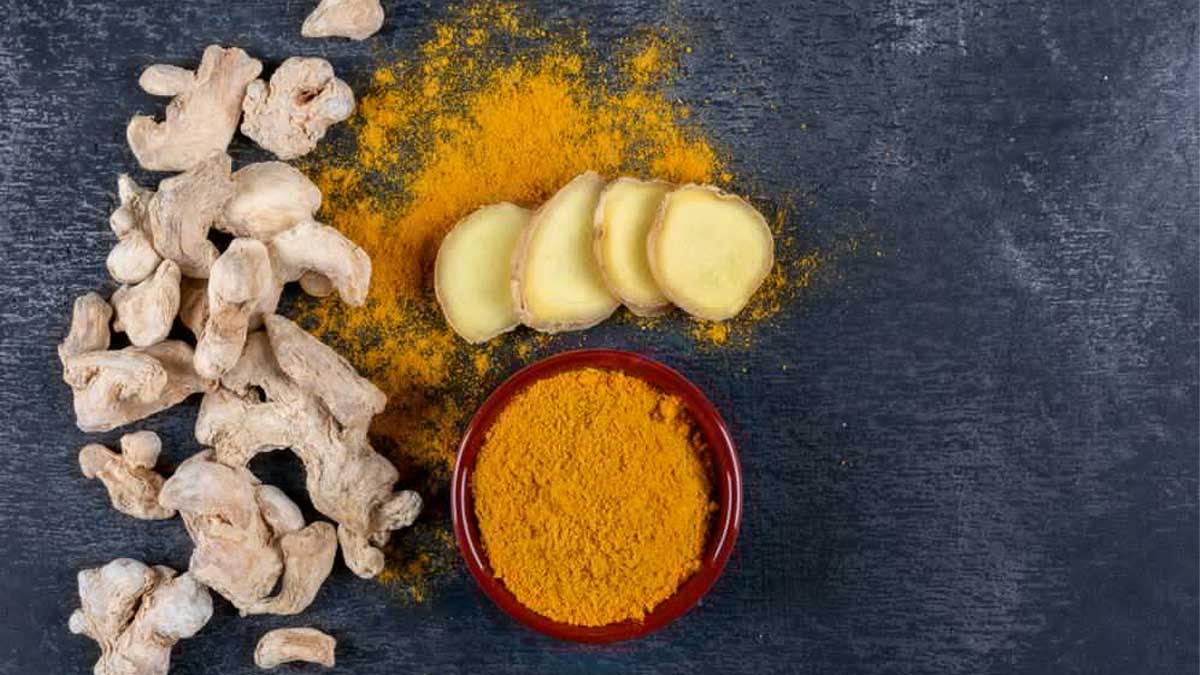
Let's take a trip back to when we found life in inanimate objects. During childhood, whether it be the clouds or the vehicles on the road, we found reflections of living creatures in them. Interestingly, the same goes for certain foods, which resemble the body parts they help to heal. From sweet potatoes and tomatoes to grapes and walnuts, here are foods that look like the organs they benefit the most.
Table of Content:-
Sweet Potatoes And Pancreas

Sweet potatoes are a beneficial winter food because they are almost identical to the pancreas, which is located across the back of the belly, behind the stomach. What's fascinating about the food is that it is rich in beta-carotene, which is linked to pancreatic health. It also contains high antioxidant properties, which prevent or delay some types of cell damage in the pancreas.
Also Read: Regular Potato Vs Sweet Potato: Which One Is More Healthier?
Grapes And Lungs
While grapes' clustered, round shape is what makes them seem identical to the lungs, their nutrient profile is what makes them good for respiratory organs. The skin of grapes contains resveratrol, an antioxidant that is said to benefit lung function.
Celery And Bones
Celery is identified as these long, fibrous stalks, which often resemble the bones. Fascinatingly, it contains essential nutrients like vitamin K that also benefit the part they resemble: bones. According to the Harvard T.H. Chan School of Public Health, vitamin K facilitates the production of proteins in bones, including osteocalcin, which is required to prevent the weakening of bones.
Tomatoes And Heart

The vibrant red colour and the heart-like shape are what make tomatoes look like earts. It is one of the richest sources of lycopene, an antioxidant that some studies suggest may have cardiovascular benefits. According to research published in the International Journal of Molecular Sciences, consuming tomatoes may help reduce the risk of atherosclerosis, which is the thickening or hardening of the arteries, consequently lowering the chance of developing a heart disease.
Also Read: Cholesterol Levels Through The Roof? Here's How Tomato Juice Can Help You
Walnuts And Brain
A look at a walnut, and we cannot help but associate it with the brain. These nuts are a rich source of omega-3 fatty acids, particularly alpha-linolenic acid (ALA), which is believed to promote cognitive function and overall brain health.
Kidney Beans And Kidneys
The name itself gives it away! Due to their shape, kidney beans are named after the human kidneys. While the association is symbolic, these beans offer essential nutrients like folate, magnesium, and potassium, which are highly beneficial for the organ.
Mushrooms And Ear

Mushrooms share a striking resemblance with the human ear. But besides that, it also contains nutrients like vitamin D, which help support your immune system and also reduce the risk of inflammation in the body, which helps prevent ear infections.
Citrus Fruits And Breast
Citrus fruits like oranges, lemons, and grapefruits are known for their vibrant colours and sweet and sour juices. Many associate the fruits with breast health because of their resemblance to mammary glands. Although there is no direct link between the two, citrus fruits are rich in vitamin C and antioxidants, which contribute to overall well-being.
Ginger And Stomach

Ginger has an irregular appearance, which also makes it appear similar to the digestive system. Traditionally, the flavourful spice has been used to alleviate stomach-related issues, including bloating, indigestion, heartburn, and nausea. It can be had in many ways, either in its raw form, as tea, or as a spice.
Carrots And Eyes
Carrots themselves don't look like human eyes, but when they're sliced into round shapes, they might vaguely resemble the structure of an eye when placed side by side in pairs. But that’s not all. The beta-carotene present in the vegetable is converted into vitamin A by the body, which in turn is said to help improve vision and support overall eye health.
Conclusion
While it is interesting to see how certain foods resemble different organs in our body, it is important to acknowledge their benefits for our health and overall well-being. Incorporating them into our daily diet can have a positive impact on both our physical and mental health.
Also watch this video
How we keep this article up to date:
We work with experts and keep a close eye on the latest in health and wellness. Whenever there is a new research or helpful information, we update our articles with accurate and useful advice.
Current Version
